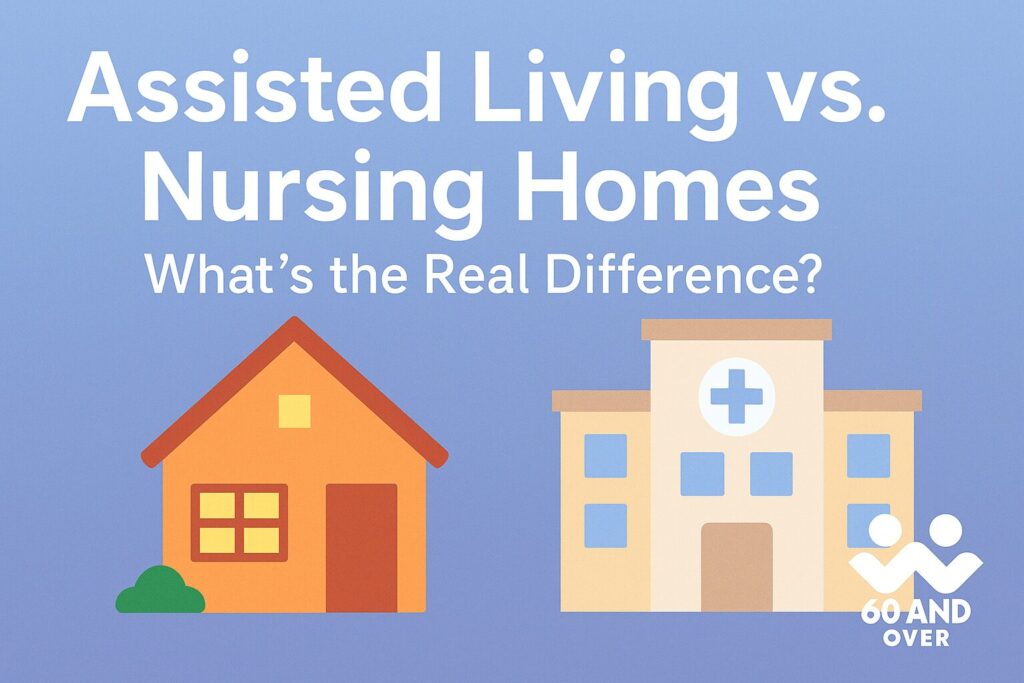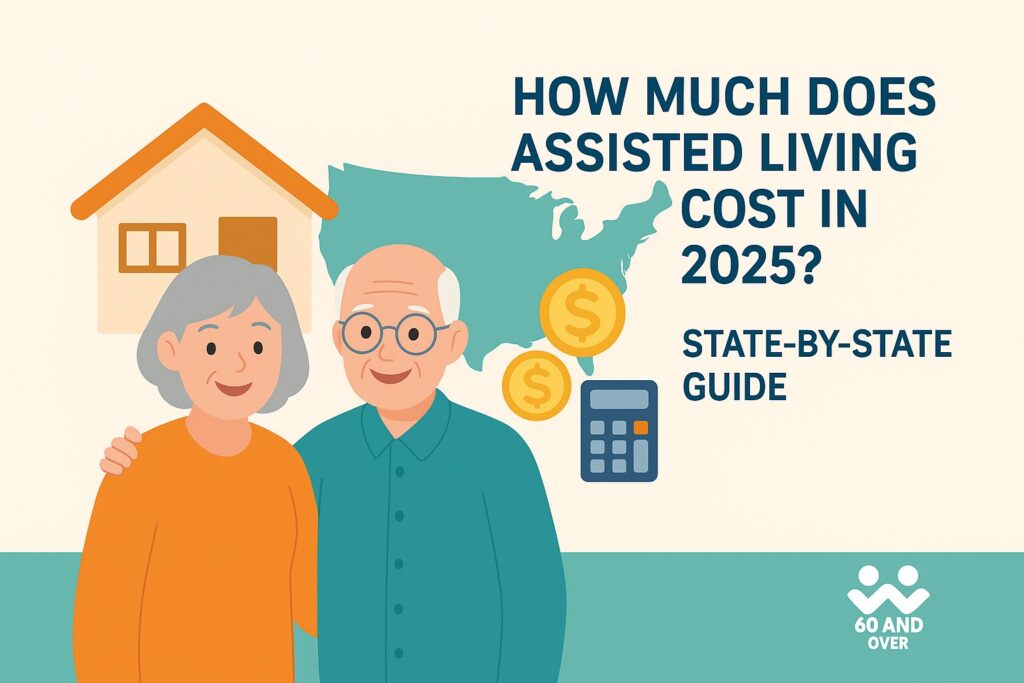Introduction
Caregiving is one of the most meaningful roles a person can take on, but it can also be one of the most exhausting. For seniors over 60 who are caring for a spouse, sibling, or even adult child, the constant responsibilities can feel overwhelming.
Many caregivers face burnout—emotional, physical, and mental exhaustion that comes from long-term stress without enough support. This guide explains how to recognize caregiver burnout and highlights essential support systems that make caregiving healthier and more sustainable.
What Is Caregiver Burnout?
Caregiver burnout occurs when the demands of looking after another person outpace your physical, emotional, and mental resources. It often happens gradually, starting with small signs of fatigue and building into full exhaustion if left unaddressed. Understanding what burnout looks like is the first step toward preventing it.
Signs of caregiver burnout include:
- Persistent feelings of tiredness even after rest.
- Withdrawal from friends, family, or activities you enjoy.
- Irritability, sadness, or anxiety that feels constant.
- Neglecting your own health needs or doctor visits.
- Trouble concentrating or making decisions.
- Resentment toward the caregiving role.
Recognizing these symptoms early makes it easier to take action before burnout takes a serious toll.
Why Caregiver Burnout Happens
Caregiving often demands a level of sacrifice that few other responsibilities require. It can disrupt routines, strain finances, and test emotional resilience. Understanding the root causes allows caregivers and families to plan better support.
Common causes of caregiver burnout include:
- Providing constant care without breaks or respite.
- Balancing caregiving with work, home, or parenting duties.
- Financial strain caused by medical bills and lost income.
- Emotional stress from watching a loved one’s health decline.
- Lack of support from family members or outside resources.
- Unrealistic expectations of being able to “do it all.”
By identifying the causes, families can build solutions that protect the caregiver’s well-being.
The Importance of Support Systems
No caregiver should face their responsibilities alone. Support systems can reduce stress, prevent burnout, and improve quality of care. These systems can come from within the family, the community, or professional services. The right mix creates balance and prevents isolation.
Types of support systems include:
- Family members who share responsibilities or provide respite care.
- Community resources such as senior centers or volunteer programs.
- Professional caregivers who assist part-time or full-time.
- Support groups where caregivers share experiences and advice.
- Online resources and helplines for guidance.
- Faith-based groups offering emotional and spiritual support.
Strong support networks remind caregivers that they are not alone.
Involving Family Members in Care
Families often underestimate how much help is needed until the main caregiver begins to struggle. Creating open communication about caregiving roles helps spread responsibilities and avoids resentment.
Ways families can contribute include:
- Assigning specific tasks such as cooking meals, managing bills, or transportation.
- Rotating visits so the primary caregiver has personal time.
- Offering financial help when possible.
- Taking over for short periods so the caregiver can rest.
- Checking in regularly to provide emotional support.
Even small contributions add up to big relief for the primary caregiver.
Community and Professional Resources
Communities often have hidden resources that can make caregiving easier, but many families don’t know they exist. Exploring these options can dramatically reduce stress.
Examples of community and professional resources include:
- Adult day care centers that provide daytime supervision.
- Respite care programs offering short-term relief for caregivers.
- Home health aides who can help with daily activities.
- Nonprofit organizations that provide financial or material aid.
- Local agencies on aging that connect families with programs.
- Meal delivery services for homebound seniors.
Utilizing these resources ensures caregivers don’t carry the entire load alone.
The Role of Support Groups
Support groups bring caregivers together to share struggles, solutions, and encouragement. Being around people who understand can reduce feelings of isolation and provide practical tips. Both in-person and online options are available, making it easier to find the right fit.
Benefits of support groups include:
- Reducing isolation by connecting with others in similar roles.
- Learning coping strategies from experienced caregivers.
- Sharing frustrations in a safe, nonjudgmental space.
- Receiving validation for your feelings and challenges.
- Gaining access to additional resources through group connections.
- Support groups provide both emotional comfort and practical guidance.
Self-Care Strategies for Caregivers
One of the hardest lessons for caregivers is realizing that self-care is not selfish—it’s essential. Ignoring your own needs leads to faster burnout and makes it harder to provide good care. Prioritizing your health allows you to care more effectively.
Practical self-care strategies include:
- Scheduling regular breaks and days off whenever possible.
- Keeping medical appointments and managing your own health.
- Eating balanced meals and staying hydrated.
- Exercising, even in short sessions, to reduce stress.
- Maintaining hobbies and activities you enjoy.
- Asking for help without guilt.
By protecting your own well-being, you ensure you can continue supporting your loved one.
Balancing Caregiving With Other Responsibilities
Many caregivers juggle multiple roles, such as parenting, working, and volunteering. Balancing these with caregiving requires planning and compromise. Creating structure helps reduce stress and prevents important areas of life from being neglected.
Tips for balancing responsibilities include:
- Creating schedules that include both caregiving and personal time.
- Setting realistic expectations about what you can handle.
- Seeking flexible work arrangements when possible.
- Delegating tasks to others instead of doing everything yourself.
- Accepting that “good enough” is often better than perfect.
Balance is about sustainability, not perfection.
When to Seek Professional Help
Sometimes caregiver burnout requires more than self-care and support systems—it requires professional intervention. Recognizing when to reach out can prevent long-term health issues.
Signs you may need professional help include:
- Persistent depression or anxiety.
- Physical health declining due to stress.
- Inability to perform daily tasks.
- Severe exhaustion that doesn’t improve with rest.
- Thoughts of hopelessness or resentment that don’t fade.
Seeking help from a therapist, doctor, or counselor is a sign of strength, not weakness.
Conclusion
Caregiving is a gift of love, but without proper support, it can become overwhelming. By recognizing the signs of burnout, using support systems, involving family, and practicing self-care, caregivers can create a healthier balance. No one should carry this journey alone—and with the right resources, it’s possible to care for loved ones while protecting your own well-being.
FAQ – Navigating Caregiver Burnout: Support Systems Every Family Needs
Q1: What is caregiver burnout?
Caregiver burnout is a state of emotional, physical, and mental exhaustion caused by prolonged caregiving without enough rest or support. It often leads to stress, fatigue, and difficulty maintaining personal health.
Q2: What are the early warning signs of caregiver burnout?
Early signs include constant tiredness, mood changes, irritability, withdrawal from family or friends, difficulty focusing, and neglecting personal health. Addressing these signs early can prevent serious exhaustion.
Q3: How can family members help prevent caregiver burnout?
Family members can share household responsibilities, provide financial or emotional support, rotate caregiving duties, and step in to give the primary caregiver time off. Regular check-ins also ensure the caregiver feels supported.
Q4: What role do community resources play in caregiver support?
Community resources such as adult day programs, respite services, support groups, and nonprofit organizations offer practical relief. They give caregivers access to professional help, social connection, and time to recharge.
Q5: Are there professional services available to assist caregivers?
Yes. Home health aides, respite care workers, and licensed nurses can provide hands-on support. Professional help reduces the daily burden and ensures care recipients receive consistent, quality attention.
Q6: How can caregivers practice self-care without feeling guilty?
Caregivers should remember that self-care is essential, not selfish. Scheduling breaks, maintaining hobbies, staying active, and seeking counseling when needed allows caregivers to stay healthy and provide better care.
Q7: What are the benefits of joining a caregiver support group?
Support groups reduce isolation, provide emotional comfort, and offer practical advice from people in similar situations. They create a safe space to share struggles and learn coping strategies.
Q8: When should a caregiver seek professional help for themselves?
If a caregiver experiences persistent depression, severe anxiety, ongoing health decline, or overwhelming feelings of hopelessness, professional intervention from a doctor, counselor, or therapist is recommended.





